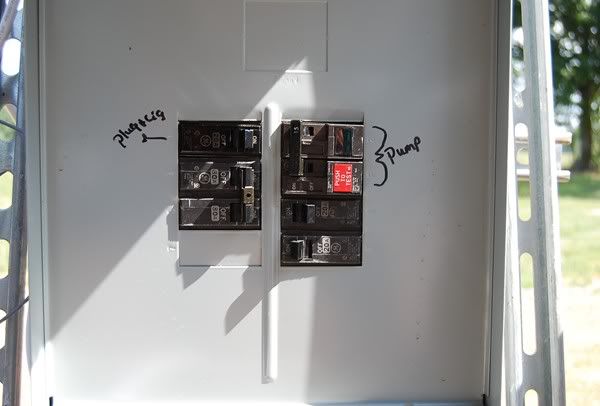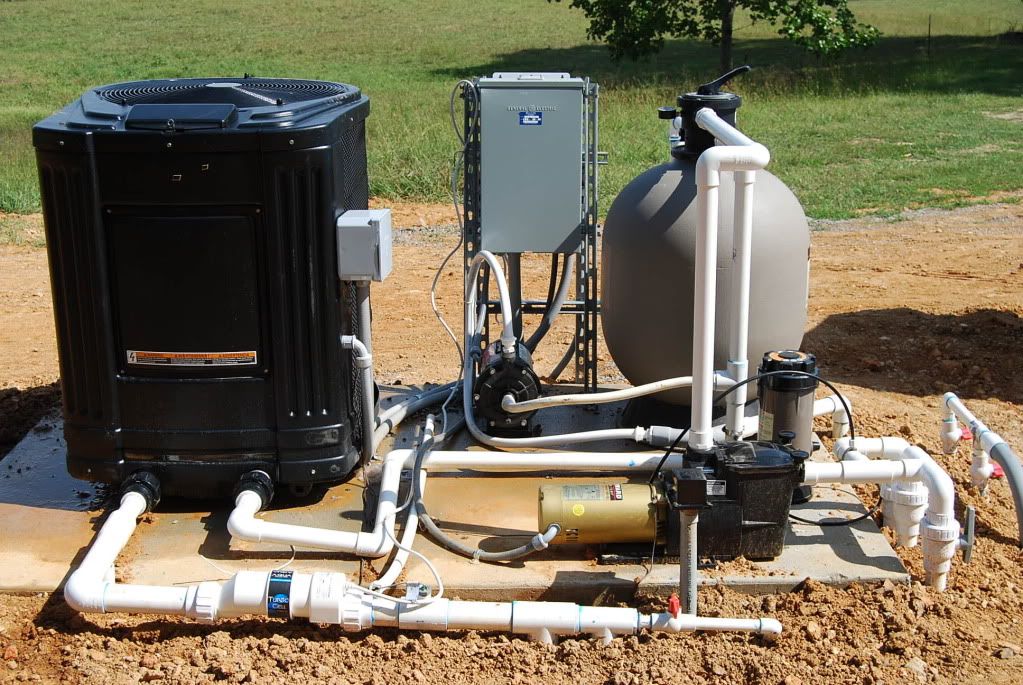I have spent a ton of money on a new pool that is all manually operated. I am disappointed in myself for not knowing better and a little disappointed in all the other people that had a hand in building the pool and didn't tell me. In the end, it is my fault though. Too late, I realized I would have to leave the pump on 24-7 when we vacation. I already paid lots of money for the electrical without realizing I was not getting a timer, so I'm hoping I can put some sort of automation that will allow the electrical wire to just be moved from the present electrical box to the new automation system. I have been looking at the Intermatic 100 AMP Dual Timer. I don't know if this is what I need or even the best choice.
If someone could please help me decide how I need to get this pool automated on timers, I would appreciate it.
I have (I know some of this is in my signature but I will list it again):
18 X 37 vinyl liner Grecian shaped pool with 2 main drains, 2 skimmers and 3 returns (1 of them is on the steps)
Jandy 3000 heater with hot gas defrost and heat/cool options
Hayward sand filter
1 1/2 HP Hayward Pump
Polaris 280 cleaner with dedicated line
3/4 HP Polaris Booster pump Cleaner
AquaRite SWG
Jandy deck jets
X-stream slide
ColorLogic 4.0 pool light
I have one double electrical plug at the pool pad
I have a switch for the ColorLogic light at the pool pad


The AquaRite is on the back of the post behind the Electric Box.
The breaker for the Heater is on the left below the one that says plug & light.
The 3/4 HP pump breaker is on the right below the one that says pump.
The AquaRite breaker is on the right, at the bottom.
Thank you!
Donna
If someone could please help me decide how I need to get this pool automated on timers, I would appreciate it.
I have (I know some of this is in my signature but I will list it again):
18 X 37 vinyl liner Grecian shaped pool with 2 main drains, 2 skimmers and 3 returns (1 of them is on the steps)
Jandy 3000 heater with hot gas defrost and heat/cool options
Hayward sand filter
1 1/2 HP Hayward Pump
Polaris 280 cleaner with dedicated line
3/4 HP Polaris Booster pump Cleaner
AquaRite SWG
Jandy deck jets
X-stream slide
ColorLogic 4.0 pool light
I have one double electrical plug at the pool pad
I have a switch for the ColorLogic light at the pool pad


The AquaRite is on the back of the post behind the Electric Box.
The breaker for the Heater is on the left below the one that says plug & light.
The 3/4 HP pump breaker is on the right below the one that says pump.
The AquaRite breaker is on the right, at the bottom.
Thank you!
Donna



